A modest budget doesn’t go far these days but there are still plenty of attainable driver’s cars around. Here are our favourites under £10,000
Words: Simon Jackon
MG Midget
When it comes to fun driver’s cars on a budget, there isn’t much that can top an MG Midget. Small, rear-wheel drive, DIY friendly and a hoot to chuck around, the MG Midget is an established classic that can still be had for surprisingly small sums.
Launched in 1961, the Midget was appealing, but not exactly a new idea. As well as rebooting a name used on diminutive MGs of the past, it was essentially a rebadged version of the Austin-Healey Sprite Mk2 – itself a revised version of the original ‘Frogeye’ Sprite that had been launched in 1958. The Frogeye had been introduced as a new entry level British sports car, combining a new monocoque bodyshell with tried and tested parts from the likes of the Austin A35, and absolutely no frills.
The Sprite was produced at MG’s factory in Abingdon, so when it came to replacing the Austin-Healey ‘Frogeye’ Sprite with the slightly more civilized Mk2 in 1961, BMC decided it would launch an MG model of the new version as well. Despite having a conventional bonnet and an opening bootlid over the Frogeye, the Midget was still a very simple car with tried and tested underpinnings and the well-established 948cc A-Series.
Changes came quickly though. In 1962 The Midget got a 56bhp 1098cc motor, front disc brakes and better interior trim, and by 1964, the Midget Mk2 had arrived with further tweaks to the 1098cc motor, exterior door handles and wind-up windows to replace the old side screens. Most notably, the old quarter elliptic spring set-up was replaced by a more conventional semi-elliptical spring layout, which lost a little chassis sharpness but improved the ride enormously.
An envious eye was cast over to the Cooper S when it got a hot 1275cc motor, but it took two years for BMC to launch the Mk3 Midget with that engine – and even then it wasn’t the 76bhp Cooper S version. Even so, power was upped to 64bhp and it could now manage 95mph. And for the first time, the cars got a proper convertible-type hood rather than the rather awkward pack-away type. A facelift would take place in 1970, with the desirable ‘round wheelarch’ from 1972-oneards being the last Midgets to use the A-Series until the 1500 variant was introduced in 1974.
The new model ushered in the biggest changes ever made to the Midget and saw a return to squared-off arches, but this was just the start. To meet US federal regulations, big and heavy black rubber impact bumpers replaced the traditional chrome items, and the ride height was increased to ensure they sat high enough. A change of engine and gearbox was also required to meet US emissions, and controversially it was the Triumph 1493cc unit that was fitted to the Midget’s Spitfire rival. It wasn’t as revvy, but it did increase the top speed a fraction, and despite being up against new-fangled rivals such as the Fiat X1/9, the Midget remained popular until its demise in 1979.
Enthusiasts have typically gravitated towards the A-Series cars, but spares supply for all models save for the very early cars is strong, and you can even buy complete bodyshells from British Motor Heritage. Club support is excellent too, and should you want to tweak your Midget there are plenty of options, including brake and suspension upgrades, five-speed gearboxes and even K-Series engine transplants.
The concept of a fun but relatively inexpensive driver’s car that’s simple to work on has stood the test of time. Later cars can be picked up for £2000-£3000, but you’ll need around £7000 for a nice A-Series car and a very nice early example will challenge the boundaries of our £10,000 budget.
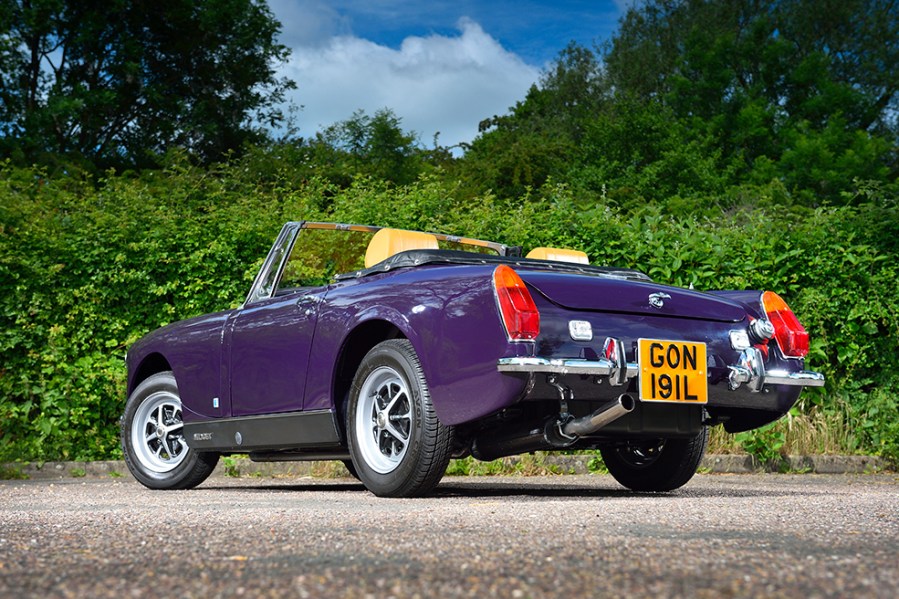
Mazda MX-5 (Mk1)
A vehicle doesn’t need blistering performance to be a driver’s car, and the humble Mazda MX-5 proves the point. It’s more practical than a Caterham but some margin, but still offers a raw sporting experience without relying on outright grunt.
Indeed, the MX-5’s bend of charm, entertainment and practicality is one of the reasons that we keep coming back to it as an excellent prospect for those in search of a cool modern classic. Arriving in the UK in 1990, the first-generation ‘NA’ MX-5 was curvaceous, cute and full of character. From its pop-up headlamps to its rounded tail, the car’s proportions were simply perfect – as was the overall spec. The decision to make the newcomer front-engined and rear-wheel drive was vital to its long-term appeal, with Mazda’s engineers adamant that the MX-5 had to offer the traditional feel of a 1960s British sports car within a modern, reliable package.
Granted, some were surprised that the MX-5 initially came with only a 114bhp, 1.6-litre engine – albeit a 16-valve twin-cam design. It was still sprightly enough thanks to a top speed of 121mph, with 0-60 in 8.7 seconds, but there was far more to it than that. The world’s motoring press were amazed by the MX-5’s fun factor, and equally full of praise for its handling and roadholding. With independent double-wishbone coil-sprung suspension all round, tuned to offer just the right compromise between ride quality and handling, it was hugely entertaining when pushed to the limit.Mazda didn’t neglect the first-generation MX-5, as by 1992 it was being fitted with a stiffer rear subframe to reduce motorway-speed vibrations, while the following year saw catalytic converters installed on all UK-spec cars. The biggest change though, came in 1994 when the new 1.8-litre model was introduced to replace the 1.6; offering 128bhp, the newcomer was usefully more powerful than its predecessor, though performance was broadly similar due to the extra weight of the increasingly well-equipped MX-5.
The 1.8 was more expensive too, which meant a possible gap at the bottom of the MX-5 range that needed filling. This occurred in 1995 when the 1.6-litre model was reintroduced, this time with just 88bhp to differentiate it more from the 1.8. Performance obviously suffered, but the new entry-level MX-5 still offered the same fun appeal and proved a useful addition to the range.
While there were several special editions, no major changes came until the second-generation car arrived in the UK in 1998 – this is known as the ‘NB’. Lacking the earlier car’s pop-up headlights, it’s not quite as popular with enthusiasts, and today it’s the earlier cars that seem to be more coveted. At more than 30 years of age, the Mk1 is perhaps no longer a modern classic, but an established one, and can corrode just like the cars that inspired it. Check the bottom of the front wings, scuttle area and floors for rot, but pay special attention to the sills which can suffer due to blocked drain holes. Engines are pretty robust provided scheduled maintenance is completed in a timely fashion – check the cambelt history, and don’t rule out a suspension refresh. Everything else is beautifully simple, including the convertible hood – new ones are start at under £500.
For our budget of £10,000 you’ll be able to pick up a cracking NA car. Prices for useable examples start at around £3500, and a nice one should set you back £5000-£6000. Spend the full pot and you’ll get one of the very best driver’s cars around.
Caterham Seven
Granted, this one is a stretch for our budget, but a little extra hunting or home fettling will surely be worth it. The Seven was once a nice little earner for Colin Chapman’s Lotus outfit, and continued to sell like the proverbial hot cake when Caterham bought the rights and began selling them from 1973 onwards. The car’s tried-and-tested recipe of adding lightness meant it was able to outgun some illustrious driver’s cars over the years – and still does.
With kits of the Series 4 Seven running dry, Caterham introduced its own version of the older Series 3 in 1974. The early range was pretty simple, with the Lotus-Ford Twin Cam was available until 1983 and the Ford Kent engine later used to offer an entry-level in Seven ownership. One of the most popular models was the 1700 Supersprint, becoming the best-selling Caterham in the range. Myriad engines found their way into the Caterham over the years, ranging from 80bhp to over 300bhp and including Vauxhall units, the Cosworth BDR and the Rover K-Series. Later cars got Ford Duratec and Sigma engines, as well motorcycle units of varying ferocity. Track-focused models like the Superlight and Superlight R helped boost appeal, as did the 2000-on SV chassis models with their wider cockpits.
Arguably though, it is the less bonkers Caterhams that have passed the test of time. Even the more ‘normal’ Vauxhall- or Ford-powered examples, with 100bhp or 135bhp in the case of the Ford crossflows, provide smiles for miles. Later versions feature more sophisticated suspension, brakes, and fuel injected engines, and while they still feel rewarding to drive, the most basic and old-fashioned Sevens with 13-inch wheels and a live rear axle are perhaps the most satisfying to own and drive. Unlike most modern sports cars, you can extract all of the performance most of the time, without breaking the law. Many Caterham enthusiasts will tell you that driver’s cars don’t come any better. Even 80bhp means 0-60mph in under seven seconds.
Those in the market for a Seven should be aware that many have lived on road and track, with the abuse that brings. Ensure there is no prior accident damage, and if there is, that it has been repaired to the proper standard. When it comes to engines, all of the options in our price range will likely be familiar, but watch for head gasket failure on K-series units. Go over the suspension with a fine-tooth comb, inspecting for corrosion where the steel chassis meets the aluminium panelling, and for rot or cracks in the steel frame itself. Uneven tyre wear could simply be poor alignment, but it could also point to more serious issues.
So, can you buy one for £10,000? Only just. Recent auctions results suggest a 1980s or 1990s Seven is possible, but you’ll be right on the limit and the search may take a while as the majority of cars in good condition sell for closer to £15,000. Don’t let that put you off tough, as a Caterham Seven is about as visceral as driver’s cars get.
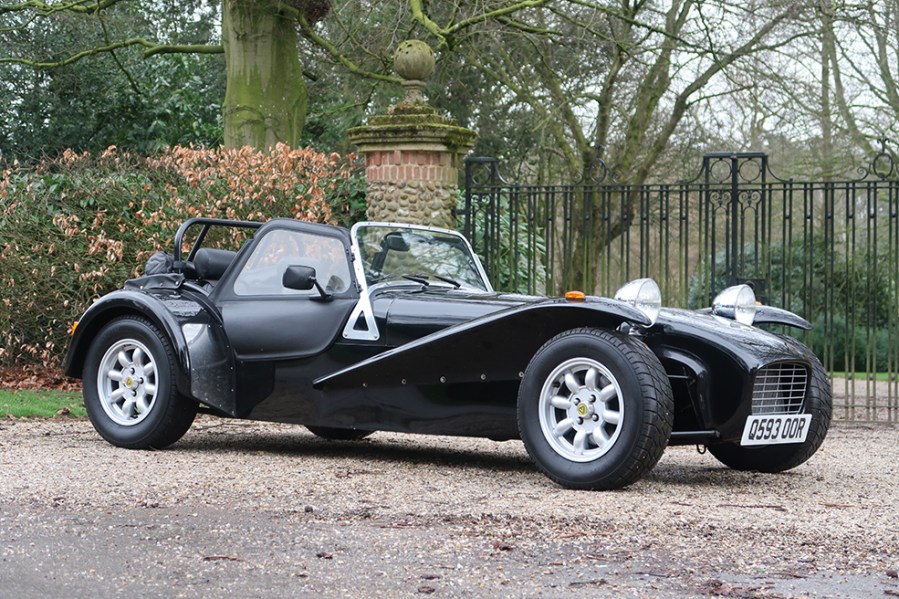
Rover Mini Cooper
Great driver’s cars can be found in the most unlikely of places, and the original Mini was a true case in point. When it first arrived in 1959, its creator Alec Issigonis intended it as a simple, utilitarian people’s car, but its radical design and a host of early reliability issues could’ve had major consequences. As it was though, the motoring press and the world of motorsport was sent into raptures by the Mini’s quantum-leap forward in roadholding, and together with its popularity among fashion-conscious city types, would help transform the Mini’s fortunes.
The Mini had been used in motorsport right from the start, but a certain John Cooper had the idea of slotting a Formula Junior engine in to create a hot version, culminating in the launch of the 55bhp 997cc Mini Cooper in 1961. It stands to reason that if John Cooper had not got involved then someone else would have, as the Mini had obvious potential to handle so much more than its original 34bhp. Still, the move proved to be a masterstroke, and within a year of the launch, one in five Minis sold were Coopers.
If the Cooper had made an impact, then the even hotter Cooper S would take things to the next level. It was launched in 1963 as the 1071 S, with 970 and 1275cc versions following in 1964 before the 76bhp 1275 became the sole S model shortly after. It was a motorsport legend too; with three Monte Carlo Rally successes and many giant-killing antics on the track. Sadly, the Cooper was discontinued in 1969, with the Clubman-fronted 1275 GT arriving as its replacement. The Cooper S also dropped in 1971 because of BL’s desire to avoid paying John Cooper his royalties, leaving the lesser-powered GT as the sole 1275cc car until it too was dropped in 1980.
While there is plenty of fun to be had in a 998cc or even an 848cc Mini, the Cooper was missed, and its comeback would be initiated by the Japanese market. Initially, Janspeed-developed Cooper tuning kits were produced for 998cc Minis, before Rover was finally convinced enough to build 1650 1275cc cars that retrospectively became known as ‘RSP’ Coopers after the newly formed Rover Special Products division that handled the work. They sold out almost immediately in July 1990, and by that September, the Cooper had reappeared as mainstream model. In late 1991, single-point injection replaced the single SU carb, and in 1996 a whole host of revisions would include a twin-point injection system that would see the car out until production was stopped in 2000. In 1992, all Mini models were fitted with the 1275cc engine anyway, and after the introduction of the twin-point, the standard model and the Cooper had the same 63bhp power output.
For our £10,000, it’s probably the pre-1996 Rover Cooper that represents the sweet point, being more affordable than the later cars, seemingly more corrosion resistant (though only just) and having more cachet than cooking models of the same era. They only have 61-63bhp, but that doesn’t really matter. Very few cars can match a Mini for sheer grin factor.
At any price level, you need to look carefully for rust just about everywhere. Wings, A-panels, scuttle, doors, rear quarters, sills inner and out, floors, boot floor, subframe mounts, the subframe itself – it goes on and on. And look for bodges like cover sills and body seams that are uneven or full of filler. Engines are generally hardy, but smoke is bad news, as is a bottom end rumble. Injection cars can also suffer from failing sensors, while all gearboxes are prone to worn synchromesh, especially on second.
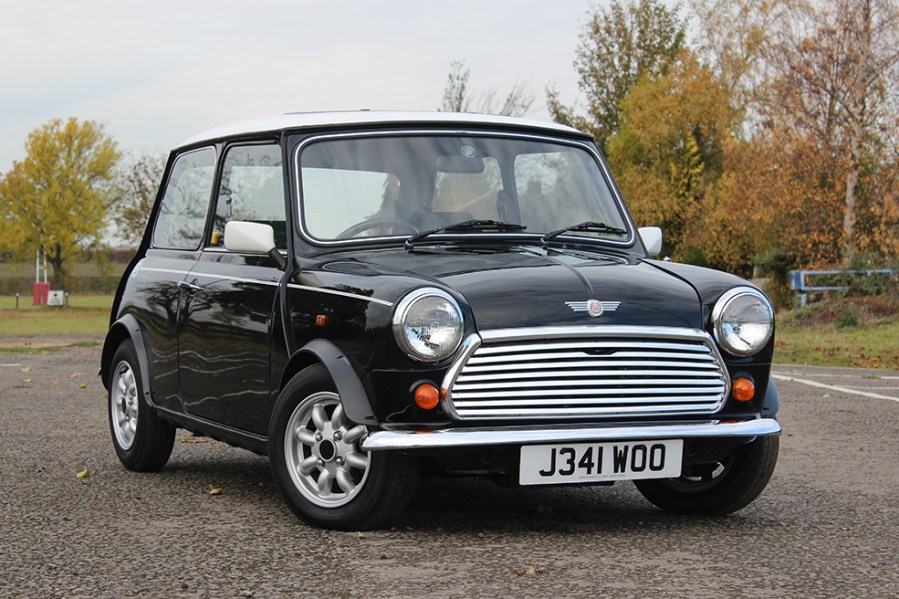
Peugeot 205 GTi
Driver’s cars don’t come much more iconic than the Peugeot 205 GTi, which remains the hot-hatch benchmark for many a critic even to this day. Born in-house under Gérard Welter, the standard 205 was a real game-changer for an ailing Peugeot. It acquitted itself well when launched in 1983, but the GTi would become the most influential model in the range and turn the 205 into an icon.
Launched in March 1984, the initial GTi models used the new 1580cc eight-valve XU unit producing 104bhp, which propelled the car to 60mph in 8.6 seconds. It compared favorably with VW’s Golf GTI, Ford’s XR3i and Renault’s 5 GTT pocket rocket. However, in 1986 Peugeot upped the ante with the introduction of a 130bhp 1.9-litre 205 GTi, its enlarged, longer-stroke XU9 engine and iconic Speedline wheels setting it apart from the 1.6, which itself was upped to 115bhp.
Engine power alone wasn’t the full story, though, for the GTi’s chassis was what really separated it from the chasing pack. The little Pug became famous for its entertaining nature and lively handling, cocking its inside rear wheel when unloaded in a turn and occasionally resulting savage lift-off oversteer in damp conditions. However, with the right approach a driver could extract its full potential to great effect; the combination of McPherson front struts and its trailing arm and torsion bar suspension set-up out back allowing it to run rings around far more illustrious ‘proper’ sport cars. In any case, today’s better tyre tech has helped to tame it.
Debate raged throughout the 1980s – and beyond – over which version of the 205 GTi was the one to own. The torque, larger-engined car benefitted from a very respectable 0-60mph time of eight-seconds flat making it the faster of the two, while the freer-revving 1.6 is more of a feisty little terrier in comparison. Whichever you choose, the 205 GTi embodies an era when Peugeot was right at the top of its game in the driver’s car stakes.
So good was the 205’s original design that revisions were limited, save for a few alternations in 1988 and a mild facelift in 1990. The 1.6 GTi was killed off in 1992 thanks to catalytic converter requirements, which also served to strangle the 1.9-litre car, power dropping to 122bhp. In 1994 the 1.9’s run came to an end too, with the 205 disappearing from UK price lists entirely two years later.
Values have been increasing steadily for a good number of years now, with factory original cars the most sought-after. Buyers should check bodywork carefully for signs of accident damage; a good many GTi models fell into the hands of boy racers leading to disaster. Corrosion isn’t as bad as many contemporaries, but it pays to check the sills, ear wings, wheelarches, floorpan and around the scuttle in particular. Check that sunroofs seal correctly too; leaks are not unheard of and we all know how damaging water ingress can prove to be. When it comes to the interior trim, seat bolsters can wear and you’ll be doing well to find an unmolested rear parcel shelf, as most had speaker holes into them.
The 205 GTi is definitely a favourite with well-heeled buyers wanting to relive their youth, and we’ve seen several £20,000 headliners at auction. On the flip side, we’ve seen numerous sub-£6000 examples at auction too, and our budget of £10,000 should secure a nice 1.6- or 1.9-litre car.
BMW 3 Series (E36)
The third-generation BMW 3 Series arrived in 1991, and while it was certainly a step forward in many regards it’s probably fair to say that it didn’t capture enthusiasts’ hearts in quite the same way as the E30 generation cars before it. However, in recent times the E36 has blossomed to become a modern classic well worthy of consideration among great driver’s cars, with a range of body styles, engines and trim options to suit every requirement. Of those, the E36 328i Coupe is arguably the sweet spot for our £10,000 budget, offering a mix of driving pleasure, sleek looks and what we think is a great chance to appreciate in value over the coming years.
The E36 coupe arrived in the UK in 1992 in one of three guises; the entry-level car was the 140bhp 318iS with its 16-valve four-cylinder engine, while the 150bhp 320i and 192bhp 325i got the M50 24-valve six-cylinder unit. Both six shooters were upgraded with BMW’s ‘Vanos’ variable inlet cam timing in autumn 1992, but the bigger change came in 1995 when the 325i was replaced by not one but two models – the 323i and 328i. Boasting the M52 engine with its aluminium/silicone Nikasil bore coatings and new long-port inlet manifold, the larger 193bhp 2.8-litre 328i offered excellent levels of performance. Better still was the 328i Sport Coupe of 1995, which featured M3 styling tweaks including M Technic front and rear bumpers, a limited-slip differential and revised suspension.
A year later came a mild facelift for the E36, with altered kidney grilles and side repeaters being the telltale signs. By spring 1998 BMW had seen fit to replace the Nikasil bore coating with steel bore liners, and that’s a good thing, as we’ll come to later. In late 1996, the 328i Sport lost its limited-slip differential when ASC traction control arrived. And finally, the E36 Coupe was no more when production ended in 1999, replaced by the two-door version of the E46.
It probably goes without saying that no amount of wishful thinking is going to get you behind the wheel of an E36 M3 for £10,000, and so the 328i offers the next best option. We think the coupe is the one to go for over the convertible, five-door or Touring, offering great looks that are not a million miles away from the aforementioned M3, plus strong performance and driver-centric handling.
Even the newest E36 coupe is now more than 20 years old, and when they were all but worthless many ended up in the wrong hands, succumbing to tasteless modifications. That makes locating a factory standard car tricky but not impossible. The ravages of time are another concern. Rust is most prevalent around the rear arches, and this can spread to the underneath, around the rear bumper and front wings. However, worse still are the sills. Coupe models had four circular plastic jacking points and behind here the sills can crumble into oblivion. The rear inner sill by the rear trailing arm mount is another area that should be checked carefully, too.
When it comes to engines, the M50 is tough but the early M52 with those Nikasil bores could prove troublesome, the high sulphur in UK pump fuels at the time eroding the coating and leading to BMW having to replace thousands. However, some slipped through the net – if they run well without smoking you should be OK as the sulphur is much lower now. Just be sure to run them up to temperature before shutting them off – the cold start fuelling and ‘bore wash’ is what kills these engines.
Five years ago, £5000 bought you a good 328i, but today you’ll struggle to find a car that cheap. Instead, you’ll need a budget of at least £8000, with the very best selling for around our maximum of £10,000.
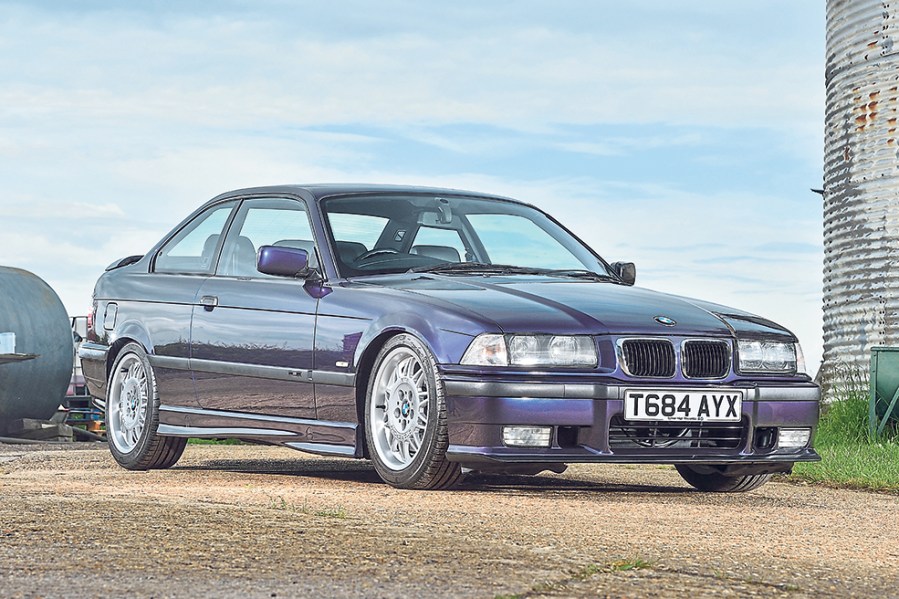
TVR Chimaera
TVR had upped its game by the early 1990s, with notable improvements to build quality. The TVR Chimaera of 1992 was derived from the Griffith that was launched two years earlier, and was intended as the most user-friendly and practical TVR yet. Longer and more spacious than its no-frills donor, the Chimaera would help widen the brand’s customer base while challenging the very best driver’s cars in its class.
As per the Griffith, TVR opted to use the Rover V8 engine in 4.0-, 4.3-, 4.5- and 5.0-litre guises, ranging in power from 240 to 340bhp. Early cars provided a choice of 4-litre and 4.3-litre engines, with the Rover LT77 five-speed gearbox sending power to the rear wheels via an open differential. In 1994, the gearbox was changed to the highly regarded Borg Warner T5 transmission, with a 4.0-litre high compression variant replacing the 4.3 and the Chimaera 500 introduced with a 5.0-litre engine. For 1997, the 4.5-litre option was introduced.
The Chimaera’s suspension was intentionally softer than that of the Griffith – another move to make this one of the most user-friendly TVR’s yet – and it paid off. There were three facelifts during the Chimaera’s lifetime, with an increasing choice of colour and trim combinations rolling off its Blackpool line, and by the time production ended in 2003 TVR had built more than 6000 Chimaeras had been built.
Despite its softer overall package, the Chimaera is no slouch. The entry-level 4.0-litre car can reach 60mph in 5.1 seconds, and closer to 4 seconds for the more powerful versions with an impressive top speed ranging from 152mph to 175mph. Torque is impressive too, the base-level Chimaera boasting 20ft.lb more than the entry-level Porsche 911 (996) 3.4-litre six-cylinder engine. The chassis really does serve to impress too – its nicely weighted and communicative steering is perfect for a good B-road blast, while the tried and tested rear-drive, front-engine layout puts it among the best classic driver’s cars.
Today the TVR Chimaera remains relatively affordable, but at the cheaper end of the market you need to watch for a rusty steel chassis, especially the outriggers. A cursory examination might not be enough to determine whether there is an issue or not, therefore calling in a specialist is advised. Also check the glassfibre body for damage and badly executed past repairs.
Engine-wise, check for head gasket failure, with the Rover V8 units also suffering from camshaft issues and oil leaks, but there are plenty of specialists around to help. Electrics should also be checked carefully – the ECU, battery and relays are all located in the front passenger footwell which can be prone to damp problems. Elsewhere, the suspension should be free from bangs or knocks over uneven roads, while the brakes are Ford items, meaning parts are plentiful and cheap.
Chimaera values were on a downward spiral for several years, but they have picked up in recent times. However, our budget of £10,000 will scrape you into ownership with a car that might require some TLC. If you can stretch to £15,000–£18,000 you’ll secure a very good 4.0-litre example, while the coveted Chimaera 500s change hands for as much as £25,000-£30,000.
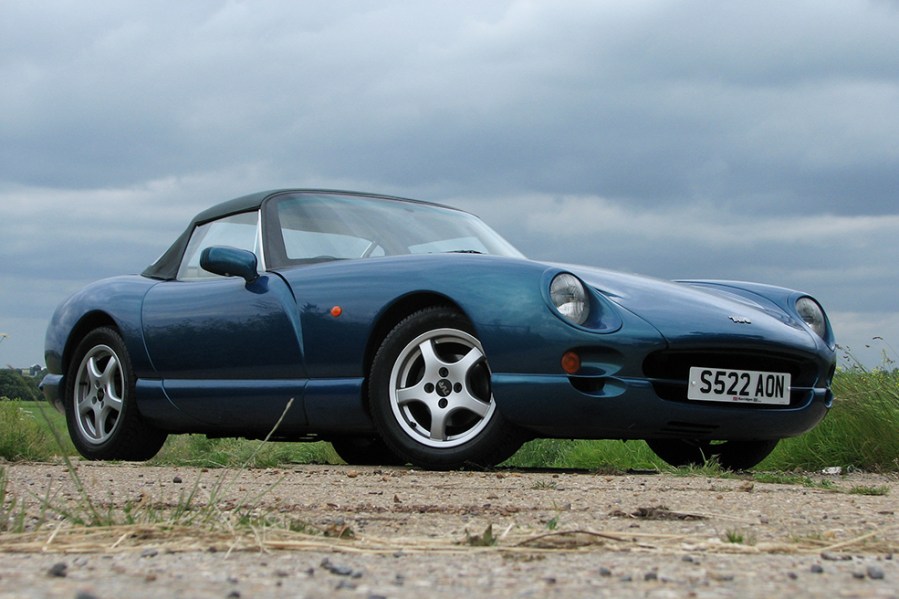
Lotus Elan (M100)
Choosing the only front-wheel drive Lotus as a driver’s car might seem like a bold move to marque purists, but to focus on that one element is doing the M100 Elan an injustice. For a considerable time it sat in the shadow of more illustrious models, but the rebooted Elan is now increasingly regarded as an appealing modern classic and one of the best front-drive driver’s cars ever made.
The M100 was an Elan built for the modern era, as such it was rather unlike its 1960s namesake. As well as having a 16-valve Isuzu motor driving its front wheels, it was clothed in an all-new wedge-shaped (and rather wide) body penned by Peter Stevens.
The M100 was critically acclaimed, but its launch at the beginning of the 1990s coincided with that of the Mazda MX-5, and that gave it a problem. Ironically, the MX-5 was more closely aligned to the original Elan than Hethel’s own effort, and arguably contributed to the M100s limited sales. Just 3855 – and only 129 non-turbo cars – were built before production ended in 1992, but it would restart a couple of years later under Bugatti ownership. Essentially a way of using up remaining engines, 800 Series 2 cars were made up to 1995. In an unlikely move, Kia bought the tooling and continued production for a few more years with its own 1.8-litre engine, but these were never sold in Europe.
We’ve all heard the clichés about Lotus’s being troublesome, but it’s not something you really have to worry about if you’re tempted by an M100. A huge amount of work went into its development, and the result is a car that’s surprisingly robust. The GRP bodywork was produced to a decent standard and obvious won’t rust, though you should check for poor repairs. Also check for corrosion on the rear suspension wishbones and the steel members running through the sills, though the latter are hard to inspect. On the inside, check for signs of water ingress caused by a leaky hood, the seals can also prove problematic and they are becoming increasingly difficult to find. Note that the Series 2 cars are reportedly known for being more watertight than the earlier examples.
Whether you opt for turbocharging or not, you get the Isuzu-derived 4XE-1 engine with either 130bhp or 165bhp (detuned to 155bhp in the Series 2 due to a catalytic converter). The engine is pretty reliable provided regular maintenance is undertaken, and generally speaking, is good for over 200,000 miles.
Front-wheel drive was a decision some traditionalists struggled to accept, but in practice the handling set new standards for such a set-up, with the clever patented ‘raft’ set-up also almost completely eliminating torque steer at the same time. The M100’s abilities on more challenging roads still impress to this day, but it’s remarkably practical too given its two-seater sports car credentials. The cabin is comfortable and usefully roomy, and with a decent boot it makes for a car that can handle long-distance touring with impressive aplomb. What’s more, you can enjoy all of this safe in the knowledge that there’s excellent club and specialist back-up on hand.
It’s still possible to find a project M100 for £2000, but a more sensible budget is somewhere between £6000 and £9000. The very best examples trade for £14,000–£16,000, with the rare non-turbo cars being worth less than their boosted siblings. Word on the street is that as values of the Elise rise – as they have been for some time, the M100 will gradually follow suit, making now the time to buy.






